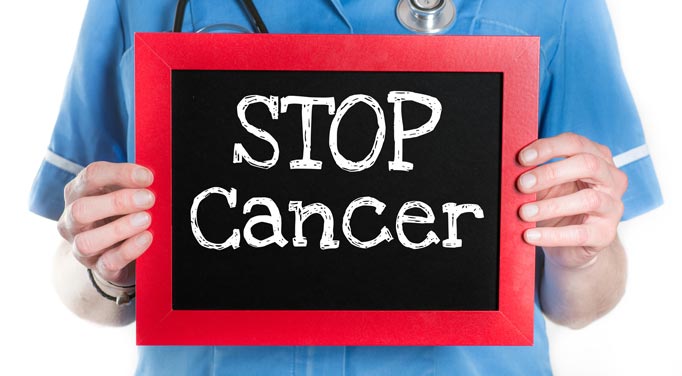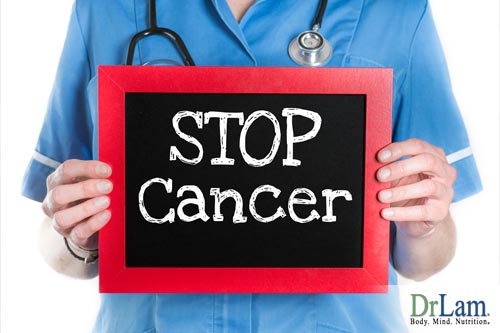 With rates of cancer as high as they are theses days, it is a good idea for almost everyone to utilize some sort of cancer prevention vitamins. The events leading up to cancers often take place long before to the clinical detection of the disease. It is a disease skewed towards old age. The median age of a U.S. cancer patient is 70. According to the National Cancer Institute, the odds of getting cancer after age 60 is 16 times greater than before age 40. Cells in our body are dividing 24 hours a day. Bad mutations are few, but they do happen. When enough mutations have occurred, the result can be cancer. In fact, we are all walking around with millions of pre-malignant cells. If we live long enough, we will come down with one form of cancer or another. Advancements in technology have increased life expectancy in industrialized nations to almost 76 years. Cancer is quickly replacing cardiovascular disease as the number one cause of death in the United States. Some researchers are turning their focus towards cancer prevention vitamins and supplements, to both prevent and treat the development of cancer cells.
With rates of cancer as high as they are theses days, it is a good idea for almost everyone to utilize some sort of cancer prevention vitamins. The events leading up to cancers often take place long before to the clinical detection of the disease. It is a disease skewed towards old age. The median age of a U.S. cancer patient is 70. According to the National Cancer Institute, the odds of getting cancer after age 60 is 16 times greater than before age 40. Cells in our body are dividing 24 hours a day. Bad mutations are few, but they do happen. When enough mutations have occurred, the result can be cancer. In fact, we are all walking around with millions of pre-malignant cells. If we live long enough, we will come down with one form of cancer or another. Advancements in technology have increased life expectancy in industrialized nations to almost 76 years. Cancer is quickly replacing cardiovascular disease as the number one cause of death in the United States. Some researchers are turning their focus towards cancer prevention vitamins and supplements, to both prevent and treat the development of cancer cells.
The lifetime chance of getting cancer of the colon is 6%, prostate 17%, breast 14%, and lung 7%. At the same time, proper diet, supplementation, and lifestyle changes can reduce cancer of the colon by up to 50%, prostrate by 15%, and lung by 90%. Dr. Gabriel Deldman, Director of the American Cancer Society, sums it up well by saying, "We don't need years of research. If people implement what we know today, cancer rates would drop. It's that simple."
Unfortunately, cancer chemo prevention research is 10-15 years behind cancer treatment research. It makes more sense to treat pre-cancerous lesions than to wait for people to develop fully blown cancer. Cancer prevention vitamins could be a potential answer instead of waiting to develop the illness.
We now know that cancer cells are developed in 3 phases:
The cornerstone of cancer prevention research is to design drugs that thwart the carcinogenic process at points where mutations may occur. One goal is to find drugs that limit the damage caused by substances which cause cell mutations, but pharmaceuticals aren't necessarily the only option, as cancer prevention vitamins are available. These substances that often cause cellular damage include such things as tobacco smoke, environmental pollutants, or even toxic substances we may eat - such as nitrosamines, in bacon and cured meats, to pesticide residues, in fruits and vegetables. Another goal is to use gene therapy to stop the random genetic mutation that results in cancer. A third goal is to intercept "free radicals" and errant oxygen molecules that are released during normal cellular metabolism (production of ATP) in order to prevent the damage they can do to cells and to trigger genetic mutations.
One trillion molecules of oxygen go through each cell every day, inflicting about 100,000 free radical wounds on the DNA. By age 30, a few million free radical lesions per cell exist in each of our body's cell. By age 50, about 30% of our cellular protein has been damaged by free radicals. The solution is to fight the free radicals with antioxidants such as selenium, beta-carotene, vitamin E, and vitamin C, among others.
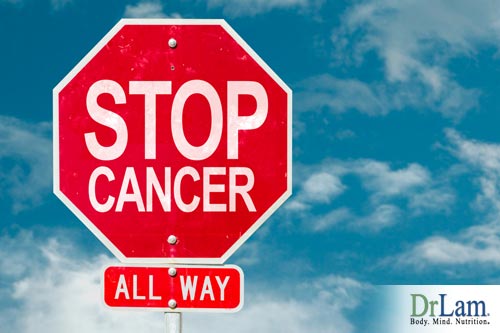 Unlike cardiovascular disease where established markers such as cholesterol have a clear correlation with the disease, many markers associated with pre-cancerous lesions have yet to be validated. There are only a few screening tests for cancer, like the Pap smear for uterine cancer and prostate surface antigen (psa) for prostate cancer. Until we get better imaging technology, determine markers, and develop preventive drugs, we are left with few precious markers for the early detection of many cancers.
Unlike cardiovascular disease where established markers such as cholesterol have a clear correlation with the disease, many markers associated with pre-cancerous lesions have yet to be validated. There are only a few screening tests for cancer, like the Pap smear for uterine cancer and prostate surface antigen (psa) for prostate cancer. Until we get better imaging technology, determine markers, and develop preventive drugs, we are left with few precious markers for the early detection of many cancers.
According to the article "7 Ways to Prevent Cancer" published by the Harvard Center for Cancer Prevention and the Harvard School of Public Health, you should:
Consider the following studies when evaluating cancer prevention vitamins:
Here is a summary of what antioxidants from diets can do when working as cancer prevention vitamins, and the anti-cancer pathway by which they appear to work:
Free radicals cause damage to DNA. Vitamins A, C, and E, lipoic acid, glutathione, bioflavonoids, certain minerals, carotenoids, green tea (active ingredient polyphenol), and tomatoes (active ingredient lycopene) are antioxidants that neutralize free radical damage.
Phase 1 (Initiation Phase) produces enzyme to break down pro-carcinogens to carcinogens. Garlic and Onion (active ingredient allyl sulfides) limit the production of Phase 1 enzyme. Calcium Glucarate (CGT) reduces tumor multiplicity during this phase.
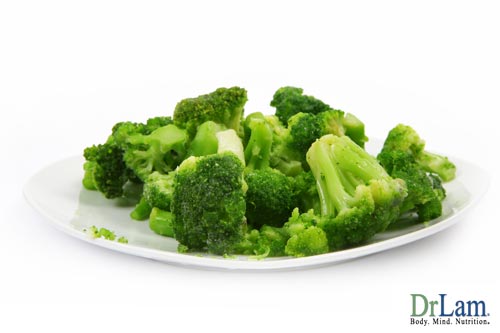 Phase 2 (Promotion Phase) produces enzymes, which remove residuals left behind by Phase 1 enzyme. Broccoli (active ingredient sulforaphane) boosts production of phase 2 enzyme.
Phase 2 (Promotion Phase) produces enzymes, which remove residuals left behind by Phase 1 enzyme. Broccoli (active ingredient sulforaphane) boosts production of phase 2 enzyme.
Calcium Glucarate (CGT) reduces tumor multiplicity during this phase.
Cell Promotion can result in uncontrolled cell growth. Flaxseed and fish oil (active ingredient Omega-3 fatty acid) inhibit cell growth.
Estrogen promotes cell growth. Soy (active ingredient isoflavone) competes for estrogen cell receptors and reduces cancer formation.
Angiogenesis results in development of new blood vessels. Red Grapes (active ingredient resveratol) suppress new vessel growth promoted by Cox 2 inhibitors.
D-Glucaric acid is a nontoxic, natural compound and one of several cancer prevention vitamins. One of its derivatives is the potent beta-glucuronidase inhibitor (1,4-GL). 1,4-GL increases detoxification of carcinogens and tumor promoters by inhibiting beta-glucuronidase and preventing hydrolysis of their glucuronides. 1,4-GL and its precursors, such as Calcium D-Glucarate, may exert their anti-cancer action, in part, through alterations in steroidogenesis accompanied by changes in the hormonal environment and the proliferative status of the target organ. Glucarates may directly detoxify any environmental agents responsible for cancer formation. It has been postulated that D-Glucarate exerts some of its effects by equilibrium conversion to D-glucarolactone, a potent beta-glucuronidase inhibitor. Laboratory studies comparing Calcium Glucarate (CGT) with a known chemo-preventive agent, 4-HPR during Initiation Phase (I), Promotion Phase (P), and Initiation plus Promotion Phase (I+P) together, showed that CGT reduced tumor multiplicity 28%, 42%, and 63% for the various stages respectively, compared to 4-HPR which reduce tumor multiplicity 63%, 34%, ad 63% respectively. The maximum effect occurred during the P and I+P phases. In particular, studies showed that the chemo-preventive effect was synergistic when CGT was used together with 4-HPR.
Molecules are composed of atoms and atoms are composed of a nucleus surrounded by orbits of electrons. In a stable molecule, these electrons orbit their respective nuclei in pairs. When a reaction occurs causing a molecule to either lose an electron, or gain an extra electron, the result is a molecule with an unpaired electron. This molecule is called a free radical. It is highly reactive, meaning it will try to combine with other molecules in order to steal an electron and so it can return to a stable state. The molecule from which the original free radical steals the electron becomes a free radical, wanting to steal an electron, resulting in a domino effect or a self-perpetuating process.
Many of our body's normal metabolic processes produce free radicals. For example, free radicals are a normal by-product in the production of ATP (the energy molecule) from glucose. In another case, our body deliberately produces a free radical. Certain types of white blood cells destroy invading microbes by the production of free radicals. Free radicals are also formed by enzymatic production. However, external sources such as pollution, cigarette smoke and sunlight cause the production of free radicals.
Excessive production of free radicals can cause damage. Fats, protein, carbohydrates, and DNA are all subject to free radical damage.
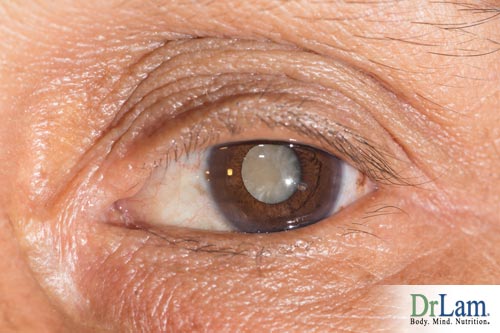 Membranes exposed to free radicals lose their ability to properly transport nutrients, lipoproteins are changed into a dangerous form, and damaged DNA has the potential to cause mutations and cancer. Free radical damage is associated with almost every chronic disease, including arthritis, heart disease, cataracts, cancer, Alzheimer's, and Parkinson's.
Membranes exposed to free radicals lose their ability to properly transport nutrients, lipoproteins are changed into a dangerous form, and damaged DNA has the potential to cause mutations and cancer. Free radical damage is associated with almost every chronic disease, including arthritis, heart disease, cataracts, cancer, Alzheimer's, and Parkinson's.
Antioxidants, represented in the most powerful cancer prevention vitamins, are molecules made by our bodies to neutralize free radical damage. Antioxidants do this by donating an extra electron to the free radical without becoming destabilized itself, also preventing the, otherwise self-perpetuating, free-radial process. Although the antioxidant has donated an electron, thereby becoming a free radical, it has the property of being much less reactive than the original radical it has quenched. Being less active, the affected antioxidant does not cause any further damage.
When vitamin E functions as an antioxidant and donates its electrons, it cannot function again until it has been "recharged", or has its missing electron replaced. This is where vitamin C enters the process. Vitamin C donates its electron to vitamin E, allowing Vitamin E to function again. Since certain types of antioxidants work best in different environments - some being effective in the plasma environment while others work their best within a fatty environment - there is no single "best" antioxidant. They all work together. What develops is a complex network or partnership of antioxidants that, not only fight free radicals, but also serve to regenerate one another. Hence, they work synergistically - that is, when they are all present, their effect is greater than the sum of their individual effects.
Fruits and vegetables are very high in antioxidants. Unfortunately, diet by itself cannot provide the amount of antioxidants needed for anti-aging purposes. For example, an RED, which is one of the best sources of vitamin C, contains about 65 mg of vitamin C. To get 2,000 mg, you would need to eat 30 REDs a day. Similarly, to get the 400 IU of vitamin E commonly recommended, you would have eat almost 5,000 calories of food, mostly as fat.
Antioxidants come in various forms and can be considered cancer prevention vitamins. They are classified broadly into two groups:
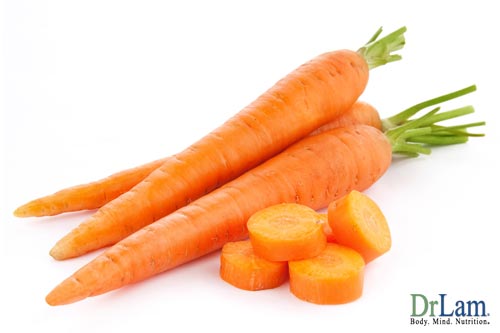 Carotenoids: The carotenoids are a group of more than 500 different pigments found in plants. These cancer prevention vitamins include beta-carotene (found in carrots), leutin, lycopene (found in tomatoes), and zeaxanthin. While functioning as antioxidants, the way they perform is slightly different from other antioxidants. Certain forms of carotenoids are able to destroy a particularly damaging form of oxygen called singlet oxygen. Research supports the hypothesis that a diet rich in carotenoids reduces the risk in many diseases, including cancer and age-related macular degeneration. Two carotenoids in particular, leutin and zeaxanthin are found in the macular of the eye. People who consume diets rich in leutin- and zeaxanthin-containing foods, such as spinach, have a reduced risk for developing AMD (age-related macular degeneration).
Carotenoids: The carotenoids are a group of more than 500 different pigments found in plants. These cancer prevention vitamins include beta-carotene (found in carrots), leutin, lycopene (found in tomatoes), and zeaxanthin. While functioning as antioxidants, the way they perform is slightly different from other antioxidants. Certain forms of carotenoids are able to destroy a particularly damaging form of oxygen called singlet oxygen. Research supports the hypothesis that a diet rich in carotenoids reduces the risk in many diseases, including cancer and age-related macular degeneration. Two carotenoids in particular, leutin and zeaxanthin are found in the macular of the eye. People who consume diets rich in leutin- and zeaxanthin-containing foods, such as spinach, have a reduced risk for developing AMD (age-related macular degeneration).Many of these have potent antioxidant activity.
It should be obvious that there is no single magic bullet for cancer prevention. A healthy lifestyle with an appropriate stress reduction and a diet rich in fruits and vegetables are excellent starters. Those who desire supplementation should consider antioxidants and calcium d-Glucarate. Certain herbs are also reported to have anti-cancer properties but the discussion of herbs is beyond the scope this Research Brief.
While there is no established laboratory reference for an optimum dosage of antioxidants for optimum health, many in the forefront of anti-aging research are advocating the levels of intake toward the upper limit of what is recommended as safe, relatively speaking. While each person is unique in his or her requirement, the following represents part of a common regimen of natural chemo-preventive strategy for those with a high risk of cancer due to family history or those who have existing cancer.
Additional Antioxidants and Minerals to be considered include:
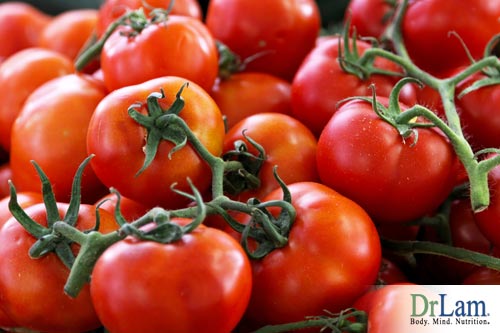 The fact is no one knows which of the myriad of chemicals in a turnip or tomato does the most to keep our cells healthy. In order to scientifically study these issues, it will take decades of clinical study. Even then, age, heredity, and other unknown risks will still make prevention an inexact science. The question is this: Should we change our lives on the strength of current laboratory studies and epidemiological associations, or should we wait until the case for soy-burgers is seamless before taking action?
The fact is no one knows which of the myriad of chemicals in a turnip or tomato does the most to keep our cells healthy. In order to scientifically study these issues, it will take decades of clinical study. Even then, age, heredity, and other unknown risks will still make prevention an inexact science. The question is this: Should we change our lives on the strength of current laboratory studies and epidemiological associations, or should we wait until the case for soy-burgers is seamless before taking action?
Cancer prevention strategy should be started during youth, using lifestyle choices which minimize the body's exposure to free radicals and maximizes the body's exposure to circulating antioxidants. This can be accomplished through diet and supplementation. It is never too late to start, although we do know that the earlier you start, the better your chance of avoiding cancer.
References
Abou-Issa HM et al: Putative metabolites derived from dietary combinations of calcium glucarate and N-(4-hydroxyphenyl) retinamide act synergistically to inhibit the induction of rat mammary tumors by 7,12-dimethylbenz(a)anthracene. Proc Natl Acad Sci USA 1988 Jun;85(12):4181-4.
Abou-Issa H et al: Relative efficacy of glucarate on the initiation and promotion phase of rate mammary carcinogenesis. Anticancer Res 1995;May-Jun:15(3):805-10.
Ames, BN et al: Oxidants, antioxidants, and the degenerative diseases of aging. Proc Natl Acad Sci USA 1993;90(17):7915-22.
Curley RW et al: Activity of D-glucarate analogues: synergistic antiproliferatie effects with retinoid in cultured human mammary tumor cells appear to specifically require the D-glucarate structure. Life Sci 1994;54(18):1299-303.
Gey KF. Vitamins E plus C interacting co-nutrients required for optimal health. Biofactors 1998; 7(1-2):113-74.
Heerdt AS et al: Calcium Glucarate as a chemo-preventive agent in breast cancer. Isr J Med Sci 1995;31(2-3):101-5.
Liu JF, Lee YW. Vitamin C supplementation restores the impaired vitamin E status of guinea pigs fed oxidized frying oil. J Nutr 1998;128(1):116-22.
Maramag C et el: Effect of vitamin C on prostate cancer cells in vitro: effect on cell number, viability, and DNA synthesis. Prostate 1997 Aug 1; 32(3):188-95.
Shang S et al: Dietary carotenoids and Vitamins A, C, and E and risk of breast cancer. J Natl Cancer Inst 1999 Mar 17;91(6):547-56.
Valcic S et al: Antioxidant chemistry of green tea catechins. ChemRes Toxicol 1999;12(4): 382-6.
Walaszek Z et al: Metabolism, uptake, and excretion of a D-glucaric acid salt and its potential use in cancer prevention. Cancer Detect Prev 1997;21(2):178-90.
© Copyright 2001 Michael Lam, M.D. All Rights Reserved.
